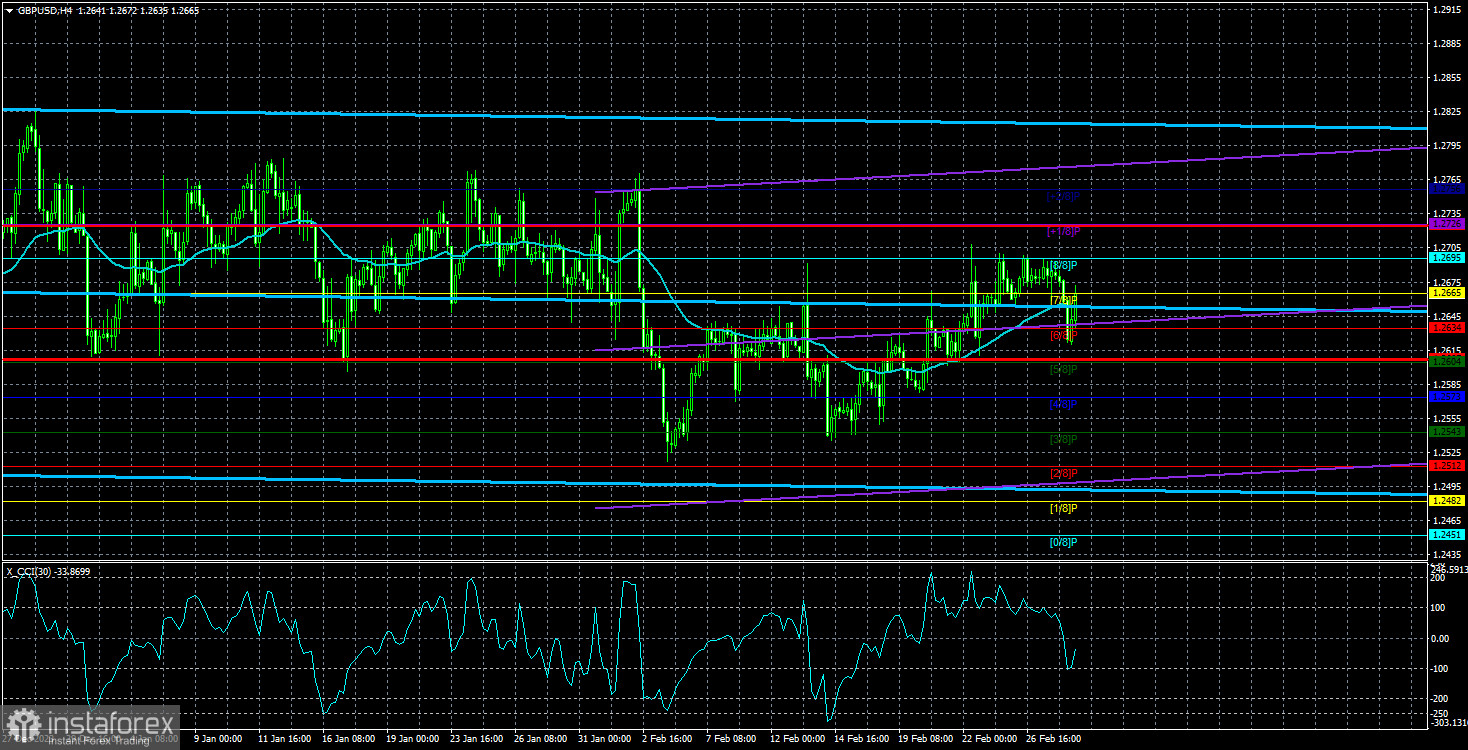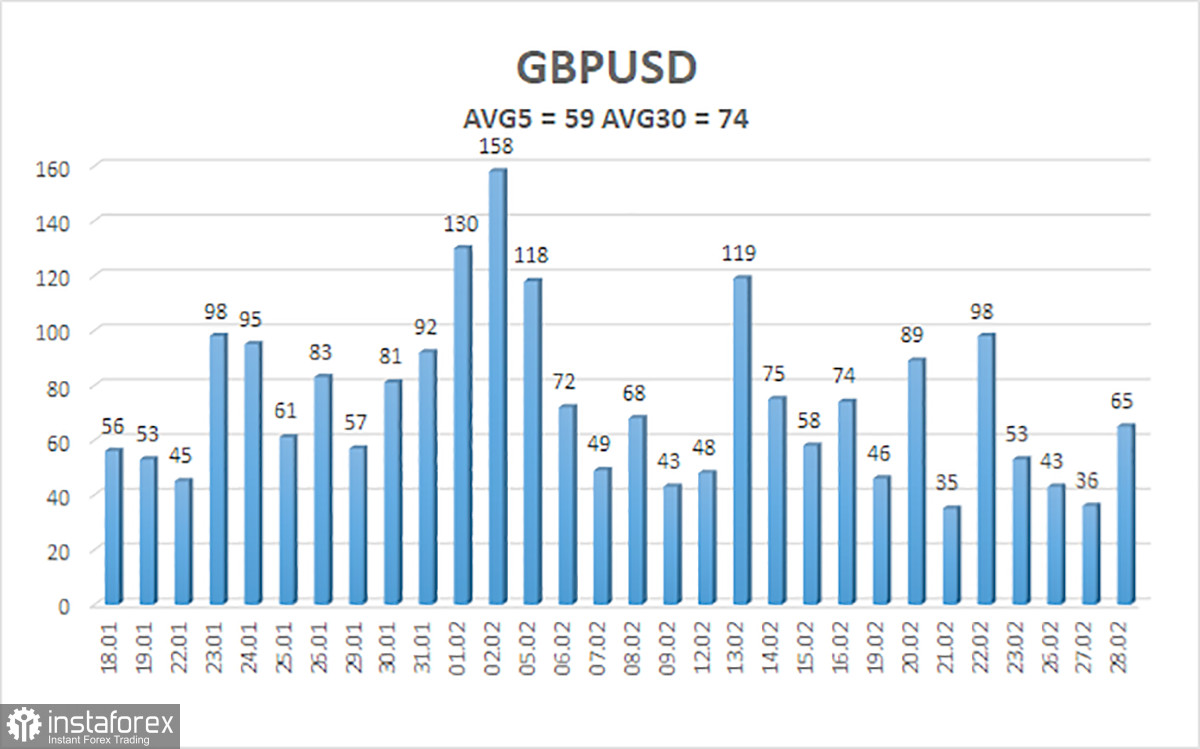
The GBP/USD currency pair also traded lower yesterday, but unfortunately, not for long. We have repeatedly warned that a new decline in the quotes of the British currency is looming. Even if it continues to move flat now, there should be equal segments of growth and decline within it. The pair failed to overcome the Murray level "8/8"-1.2695 four times, so a new decline is likely.
From a longer-term perspective, we expect movement only to the south for the British pound. We believe the pound has been unreasonably expensive for the past few months, and the market has refused to sell it, although there were often all the necessary reasons for doing so. However, sooner or later, fairness must prevail.
The pound also failed to establish itself on the 24-hour timeframe above the Ichimoku cloud, which is very important and indicative. Now, we expect a fall back to the 25 level, and in the future, it should only gain momentum.
Meanwhile, experts have concluded that the first rate cut in the UK may come in August. Many experts believe that inflation in the United Kingdom will sharply decrease in the coming months, creating the necessary conditions for a transition to a softer monetary policy. Most of the decline in inflation may be due to a decrease in prices for energy resources and utilities, so the Bank of England will need to pay more attention to indicators that constantly influence inflation. One of these indicators is wages. If wages in Britain continue to slow down, it could provide a good platform for further slowing consumer prices.
The British regulator should not rush to cut rates for now. Formally, a recession in Britain has already begun. However, if experts are correct and inflation slows down more quickly in the coming months, it is possible to wait for 1-2 quarters to ensure the inflation trajectory remains at 2%. In August, the Bank of England will present updated forecasts for the economy and inflation, and it may be the time for the first rate cut. However, it cannot be ruled out that monetary policy easing will begin in June, which was hard to believe just a month ago.
It is worth noting that the market has long believed (and may still believe) that the Bank of England's rate cut will begin much later than the Fed's rate cut. All three central banks may start easing with a difference of at most one meeting. Since the dollar actively depreciated on market expectations, it must now strengthen. Moreover, it is not obvious that the US regulator will cut rates at every meeting. Some experts believe that by the summer of 2025, there will be only five steps to reduce by 0.25% each. The market, on the other hand, was pricing in 5-6 cuts in 2024 alone. The dollar remains undervalued by market participants.

The average volatility of the GBP/USD pair for the last five trading days as of February 29 is 59 points. For the pound/dollar pair, this value is considered "low." On Thursday, February 29, we expect movement within the range limited by the levels of 1.2607 and 1.2725. The senior linear regression channel is directed sideways, and the junior one is also. Thus, there are no questions about the current trend. The CCI indicator entered the oversold area, so we are now observing another upward movement within the flat.
Nearest support levels:
S1 – 1.2634
S2 – 1.2604
S3 – 1.2573
Nearest resistance levels:
R1 – 1.2665
R2 – 1.2695
R3 – 1.2726
Trading recommendations:
The GBP/USD currency pair has left the sideways channel and may be moving towards forming a new downward trend. However, the current movement of the pound again looks more like a flat. The pair managed to move down more than 200 points, but essentially, all the fall of the British pound has ended. We expect a resumption of movement to the south with targets at 1.2543 and 1.2512. Long positions can only be considered with the price above the moving average and targets 1.2665 and 1.2695, and only with the corresponding macroeconomic background. Both targets have already been worked out, and if a downward trend has started now, then purchases cannot be a priority. However, signals are needed for buying and selling, which need to be improved.
Explanations for the illustrations:
Linear regression channels – help determine the current trend. If both are directed in the same direction, the trend is strong.
Moving average line (settings 20.0, smoothed) – determines the short-term trend and direction in which trading should be conducted now.
Murray levels – target levels for movements and corrections.
Volatility levels (red lines) – the probable price channel in which the pair will spend the next day, based on current volatility indicators.
CCI indicator – its entry into the oversold area (below -250) or the overbought area (above +250) means that a trend reversal towards the opposite side is approaching.
 English
English 
 Русский
Русский Bahasa Indonesia
Bahasa Indonesia Bahasa Malay
Bahasa Malay ไทย
ไทย Español
Español Deutsch
Deutsch Български
Български Français
Français Tiếng Việt
Tiếng Việt 中文
中文 বাংলা
বাংলা हिन्दी
हिन्दी Čeština
Čeština Українська
Українська Română
Română

